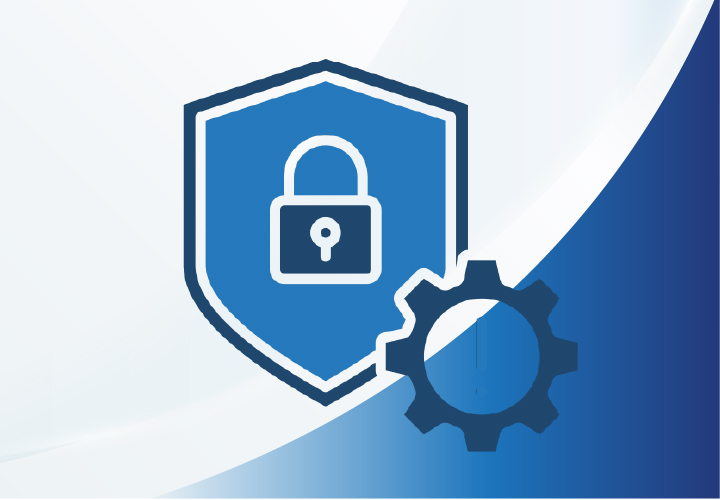Cybersecurity and Ethical Hacking Internship Program
in CS & ITAbout this course
Cybersecurity & Ethical Hacking – 6-Week Course Overview
This 6-week course provides hands-on training in cybersecurity fundamentals, ethical hacking techniques, and security best practices. Participants will gain knowledge in network security, penetration testing, vulnerability assessment, and cyber defense mechanisms.
Week 1: Introduction to Cybersecurity & Ethical Hacking
Objective: Understand core cybersecurity concepts, threats, and ethical hacking principles.
· Introduction to Cybersecurity – Key terms, threat landscape, and security importance.
· Understanding Ethical Hacking – Types of hackers (white, black, grey) and legal aspects.
· Cyber Threat Landscape – Recent cyber threats, case studies, and prevention strategies.
· Types of Cyber Attacks – Analysis of common attacks like phishing, malware, and DDoS.
Week 2: Cybersecurity Tools & Network Security
Objective: Set up security environments and perform basic security assessments.
· Installing Kali Linux – Setup and exploration of security tools.
· Footprinting & Reconnaissance – Passive and active information gathering techniques.
· Network Scanning with Nmap – Scanning networks for open ports and vulnerabilities.
· Vulnerability Assessment – Introduction to OpenVAS/Nessus for security testing.
Week 3: Exploitation & Attack Techniques
Objective: Understand exploitation methods and practice ethical hacking techniques.
· Metasploit Framework Basics – Using Metasploit for penetration testing.
· Password Cracking – Using John the Ripper for dictionary-based attacks.
· Wireless Network Security – Securing Wi-Fi and preventing unauthorized access.
· Social Engineering Techniques – Case studies on phishing, baiting, and pretexting.
Week 4: Web Security & Secure Configuration
Objective: Explore web application security, firewall configurations, and mitigation strategies.
· Firewall Configuration Basics – Configuring UFW/Windows Firewall for security.
· OWASP Top 10 Web Vulnerabilities – Understanding and mitigating security risks.
· SQL Injection Demonstration – Performing a basic SQL Injection attack on a test system.
· Cross-Site Scripting (XSS) Demo – Understanding XSS attacks and defense techniques.
Week 5: Security Policies, Incident Response & Compliance
Objective: Learn to implement security policies and respond to cyber incidents.
· Creating a Secure Password Policy – Best practices for password management.
· Incident Response Plan (IRP) – Steps for handling cybersecurity incidents.
· Cybersecurity Laws & Ethics – Overview of IT laws, GDPR, and ethical hacking guidelines.
· Cloud Security & Compliance – Securing cloud environments and regulatory frameworks.
Week 6: Final Project – Simulated Penetration Testing
Objective: Conduct a full penetration test on a test network and apply learned skills.
· Reconnaissance & Scanning – Gathering target information.
· Exploitation & Vulnerability Testing – Identifying and exploiting system weaknesses.
· Post-Exploitation & Reporting – Documenting findings and providing recommendations.
· Final Project Submission – Comprehensive penetration test report.
Final Outcome
By the end of the course, participants will:
· Develop a strong foundation in cybersecurity principles and ethical hacking techniques.
· Gain hands-on experience with tools like Kali Linux, Metasploit, Nmap, OpenVAS, and John the Ripper.
· Learn how to identify, exploit, and mitigate vulnerabilities in networks and web applications.
· Understand ethical hacking methodologies, cybersecurity laws, and responsible hacking practices.
· Be able to perform reconnaissance, scanning, vulnerability assessment, and penetration testing on a test network.
· Create security policies, incident response plans, and penetration testing reports based on real-world scenarios.
· Complete a final penetration testing project, demonstrating end-to-end ethical hacking skills.
Requirements
Laptop
Internet Connection
Comments (0)
To understand the fundamentals of cybersecurity by exploring key concepts, threats, and the importance of securing digital assets.
To explore the concept of ethical hacking, its types, and its importance in strengthening cybersecurity defenses.
To analyze current trends in cyber threats and understand their implications on businesses and individuals.
To understand various cyber attack methods and their potential impacts on systems and data.
To install Kali Linux and explore basic command-line operations for cybersecurity testing.
To learn and apply passive and active reconnaissance techniques for gathering public information about a target.
To perform network scanning to identify live hosts, open ports, and services using Nmap.
To identify vulnerabilities in a test system using automated vulnerability scanning tools.
To understand the basics of the Metasploit framework and perform a simple exploitation in a controlled environment.
To explore password security by using John the Ripper for dictionary-based password cracking on test data.
To evaluate and understand the security configuration of a Wi-Fi network and propose measures to enhance its protection against unauthorized access and attacks.
To understand the psychological manipulation methods used in social engineering and explore strategies to defend against them.
To understand the role of firewalls in network security by configuring a basic firewall and controlling network traffic.
To gain awareness of common web application vulnerabilities and explore strategies to mitigate them
To demonstrate how SQL Injection works and understand its potential risks in insecure web applications.
To demonstrate a simple Cross-Site Scripting (XSS) attack on a test website and explain the associated risks.
To draft a comprehensive password policy for a small business that includes complexity rules, change frequency, and best practices.
To create a comprehensive Incident Response Plan for effectively responding to cyber incidents within an organization.
To understand key cybersecurity laws and ethical frameworks governing responsible hacking and data protection across different regions.
To conduct a simulated penetration test on a controlled/test network, applying cybersecurity techniques to identify vulnerabilities and suggest mitigation strategies.









